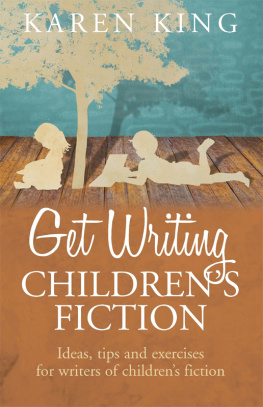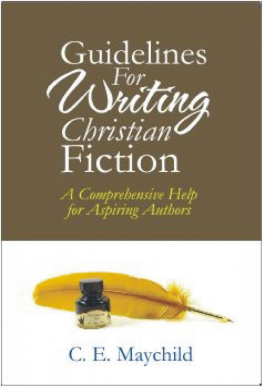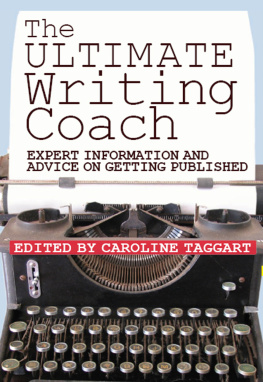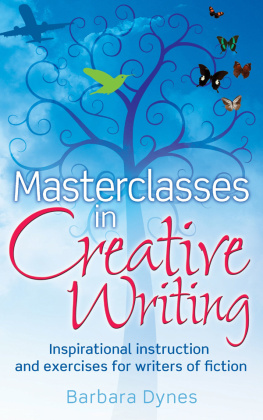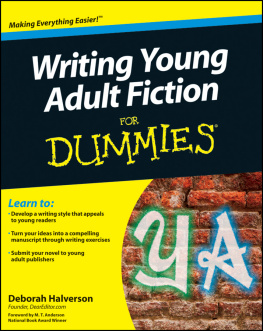Karen King is an experienced writing tutor and university lecturer on professional and university writing courses and has been writing childrens books since the mid-eighties. Shes written for many childrens magazines including Sindy, Barbie, Winnie the Pooh and Thomas the Tank Engine. Some of her short stories were featured on BBCs Playdays and her poems on the BBC One Potato, Two Potato website. She writes for all ages and in all genres: story books, picture books, plays, joke books, shes written them all! She currently tutors for The Writers Bureau and was one of the authors of their Writing for Children course and the author of their Write for Profit using the Internet course.
Other titles from How To Books
HOW TO WRITE A CHILDRENS PICTURE BOOK
and get it published
Andrea Shavick
365 WAYS TO GET YOU WRITING
Daily inspiration and advice for creative writers
Jane Cooper
CHOOSE THE RIGHT WORD
An entertaining and easy-to-use guide to better English with
70 test-yourself quizzes
Robin Hosie and Vic Mayhew
HOW TO WRITE YOUR FIRST NOVEL
Sophie King
THE FIVE-MINUTE WRITER
Exercise and inspiration in creative writing in five minutes a day
Margret Geraghty
Get Writing
Childrens Fiction
Karen King

Constable & Robinson Ltd
55-56 Russell Square
London WC1B 4HP
www.constablerobinson.com
First published in the UK by How To Books,
an imprint of Constable & Robinson Ltd., 2013
Copyright Karen King 2013
The right of Karen King to be identified as the author of this work has been asserted by her in accordance with the Copyright, Designs & Patents Act 1988
All rights reserved. This book is sold subject to the condition that it shall not, by way of trade or otherwise, be lent, re-sold, hired out or otherwise circulated in any form of binding or cover other than that in which it is published and without a similar condition including this condition being imposed on the subsequent purchaser.
A copy of the British Library Cataloguing in Publication Data is available from the British Library
ISBN 978-1-8452-8506-7 (paperback)
ISBN 978-1-4721-1013-8 (ebook)
Printed and bound in the UK
1 3 5 7 9 10 8 6 4 2
Cover design: www.mousematdesign.com
Contents
3 Characters Make Stories
Using Flashbacks
Researching Educational Publishers
Dealing with Rejections
Printing on Demand/Self-publishing Printed Books
Acknowledgements
Massive thanks to the many people who gave me quotes for this book, mainly members of the hugely supportive Scattered Authors Society (SAS). Thanks especially to: Ann Evans, Jackie Marchant, Wendy Meddour, Diana Kimpton, John Ward, Leila Rasheed, Linda Strachan, Alan Cliff, David Calcutt, John Dougherty, Nick Catman, Sandra Glover, Nicola Morgan and Moira Butterfield.
Is This You?
Are you burning with the desire to create stories that children will want to read time and time again? To transport them into fantasy worlds, exciting adventures, realistic family dramas? To entertain children, make them laugh or shiver with fright? To create characters they can relate to and care about? Do you have childrens stories buzzing around in your head, fighting to get out and down on paper? If you can answer yes to any of these questions then this is the book for you. Between these covers you will learn the techniques needed to create believable characters, realistic dialogue and gripping plots for children plus useful writing tips and exercises. So dip inside and get writing!
1
Writing for Children Know-how
BEFORE STARTING
Children are not mini adults; they are a totally different audience. So before you start writing a childrens story, think about some of the differences between children and adults. Lets discuss a few and how it will affect your writing:
Children are younger and less experienced. Their knowledge is more limited than adults so make sure that you write about things they will understand. Think about the age of the child who will be reading your story. Well talk more about this later in the chapter.
Children are smaller. Have you ever been back to your primary school and realized with shock how small it actually is? Remember how huge the school seemed when you were a child? It was easy to get lost there, the desks were high, the teachers tall, everything seemed so big. Try getting down on your knees to see the world through a childs eyes. See how high the table is, how impossible it is to reach the shelf, how tall adults seem. Bear this in mind when youre writing your story.
Childrens vocabulary and understanding arent as developed as adults. Its amazing how many authors write a childrens story just as they would write a story for adults but with children as the characters. Use vocabulary relevant to your age group and dont put anything in the story that a child of that age wouldnt understand.
Children are impressionable. Children have limited experience. They havent been in this world as long as adults. To young children anything is possible. They will happily believe that toys come to life, animals can talk and fairies exist. Which brings us to the next, very important, point.
WRITING RESPONSIBLY
Never forget how impressionable children are, especially children under seven. The world is new and fresh to them and their knowledge is limited. They can be influenced by what they read and will often copy a scenario, basing themselves on one of the characters. So write responsibly. Never show young children doing any of the following:
Talking to strangers.
Going off with strangers.
Wandering about alone or going off alone.
Doing anything that could cause them harm.
Getting past the gatekeepers
If you want to be published in the traditional way then your story probably wont get past an editor if you do any of the above things. If you are writing a childrens story, before your book even reaches its target audience it has to get past what is known in the trade as the gatekeepers. These are editors, publishers, critics, educationalists and librarians who all check that the content of the story is suitable for children of the age for which it is intended. Stories featuring children having unsupervised adventures like Enid Blytons Famous Five wouldnt be acceptable today. Hence the rise of fantasy fiction: put your child in a fantasy world and you can relax the barriers a little.
A warning tale
Editors can be very cautious, especially with books aimed at children under five. Several publishers told me that they loved my picture book story Silly Moo! but they wouldnt publish it because they considered it too dangerous in the story an apple falls on Cows head and she forgets where she lives. Their concern was that the book would encourage children to throw apples, or other things, at each others heads. I personally felt that was a bit over the top. I finally sold Silly Moo! to Top That! Publishing who didnt think it was too dangerous at all and turned it into a colourful lift-the-flap book which is very popular with children.
Top tip
A general rule of thumb is that children must never be shown doing anything that children would not safely be allowed to do in real life.
Next page
